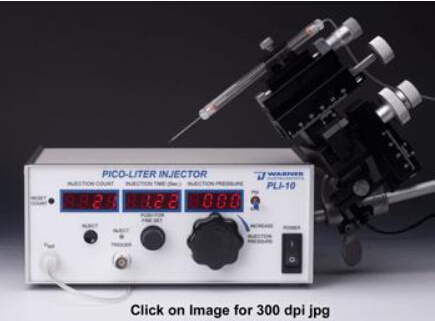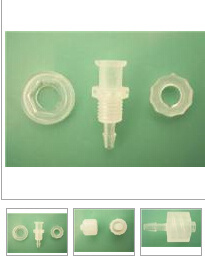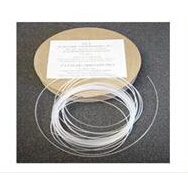| Q1 What is the inNO-T System? |
| Q2 What is the function of the ‘inNO-T’ software? |
| Q3 How would one describe the amiNO series of nitric oxide sensors? |
| Q4 What do these sensors measure? |
| Q5 How long did it take to develop these NO sensors? |
| Q6 What is the basic operation principle of these sensors? |
| Q7 What is unique about the amiNO series of nitric oxide sensors versus other NO sensors on the market today? |
| Q8 How many types of nitric oxide sensors are currently available from Innovative Instruments? |
| Q9 What are the differences between the sensors listed above? |
| Q10 What are the criteria used for selecting a specific sensor? |
| Q11 Why is the amiNO series selective for nitric oxide over other species in a complex sample mixture? |
| Q12 What is the response time of the amiNO sensors? |
| Q13 Why are there only a small number of publications that cite the use of the existing commercially available NO electrochemical sensors for cultured cells, live organs and animals, and tissue measurements? |
Q14 How are the amiNO sensors calibrated? |
| Q15 Can these sensors be used to measure nitrite and nitrate? |
| Q16 What is the life time of these amiNO sensors? |
| Q17 What instrument(s) can be used with the amiNO sensors? |
1. What is the ‘inNO-T’ System?
'inNO-T' stands for Innovative Nitric Oxide Measuring and Recording System. Simply put, it is a "state of the art" computer controlled nitric oxide meter and data acquisition system all in one compact battery operated unit. It is the most technologically advanced nitric oxide meter on the market today with an analog to digital resolution of 24 bit (16,0000,000 to 1) allowing resolution of currents down to 0.1 pA. The ‘inNO-T’ System comes complete with Meter Analysis Software, 2 ‘amiNO’ Sensors, Magnetic Stirrer, and Calibration Kit. The software is compatible with Windows™ 95, 98, 2000 and NT. |
2. What is the function of the ‘inNO-T’ software?
The ‘inNO-T’ software controls the parameters for NO measurements, display (charting), analysis and data saving and retrieval. Features include the ability to zero the background, control the recording speed, and change the scale and all the basic functions of a standard data acquisition system. On line calculations such as Minimum, Maximum, Delta, Average, Sample and Integral are also available. Data can be saved to a data file as an image and/or in text format. Data can also be fully or partially copied directly into an application such as Microsoft Excel™.
 |
3. How would one describe the amiNO series of nitric oxide sensors?
The ‘amiNO’ series of nitric oxide (NO) sensors are currently the only electrochemical sensors on the market today that are specifically designed for real time, in-situ measurements of NO in any sample or experimental setup. This would include measurements in-vivo and in cell cultures. All sensors are integrated sensors meaning that there are no reference or counter electrodes needed. All sensors are shielded from environmental and instrumental noise. |
4. What do these sensors measure?
These sensors measure free NO regardless of its source or environment. |
5. How long did it take to develop these NO sensors?
The amiNO series of NO sensors came as a result of 10 years of research and development. It started in 1991 by the porphyrinic sensor (Malinski & Taha, Nature, 358, 676, 1992). The developer of amiNO sensors has developed other NO sensors still offered by other companies. The amiNO sensors are the latest generation of NO sensors. |
6. What is the basic operation principle of these sensors?
The sensing element of the sensor is covered with a series of gas permeable membranes allowing only certain types of gas to pass through. NO diffuses through these membranes and reacts at the electrode surface. The exchange of electrons between NO and the electrode surface results in an electrical current that is monitored and recorded. The magnitude of the electrical current is directly proportional to the amount of NO diffused through the membranes, which is proportional to the concentration of NO in the sample.
 |
7. What is unique about the amiNO series of nitric oxide sensors versus other NO sensors on the market today?
Competitive NO sensors on the market today represent an earlier technology in NO sensor development. The amiNO series of NO sensors represents the latest improvements in NO sensor technology increasing sensitivity (signal/unit concentration) by over 100 times compared to currently available sensors. They also have lowered detection limits to below 1 nM. Combined with the superior electronics the ‘inNO-T’ meter, this allows the system to detect minute changes in NO concentrations. In other words, these sensors are able to differentiate between 10 and 11 nM, as an example. The following is a list of some of the other unique features these sensors offer: The amiNO-IV is the first commercially available sensor that is suitable for in-vivo measurements. It withstands insertion into tough tissues without the danger of breaking the gas permeable membrane. The amiNO-FLAT is the first commercially available sensor designed to monitor the release of NO from a monolayer-cultured cells and large flat tissue. Most of the sensors offer exceptional sensitivity (signal per unit concentration), enabling the users to monitor minute changes of NO concentrations. Some sensors offer a sensitivity in excess of 600 pA/nM, which is 100 times more sensitivity than any other known commercial sensor. Customized sensors can be fabricated with higher sensitivity limits.
This exceptionally high sensitivity minimizes any significant effects from baseline drift due to temperature variations. This "drift" is the primary drawback of most other commercially available sensors on the market today.
 |
8. How many types of nitric oxide sensors are currently available from Innovative Instruments?
The table below shows a fist of eight amiNO sensors that will meet almost any NO measurement application. Five sensors are readily available. Three are available by special order. Customized sensors are also available upon request. |
| Amino Sensor Description amiNO-100100 μm tip diameter sensoramiNO-600600 μm tip diameter sensoramiNO-IV600 μm tip diameter with a sharp mettalic tipamiNO-FLATFlat design with a large surface areaamiNO-20002 mm stainless steel tip diameter sensoramiNO-3030 μm tip diameter sensoramiNO-77 μm tip diameter sensoramiNO-GASGas phase sensor |

9. What are the differences between the sensors listed above?
The differences include size, flexibility of the body, durability, sensitivity and response time. They are specifically designed to meet the requirements for specific applications. |
10. What are the criteria used for selecting a specific sensor?
The selection of the proper NO sensor strictly depends upon the application, the expected level of NO, and budgetary requirements. The following sensitivity comparison and selection guides can be useful in choosing the right sensor for you. |









